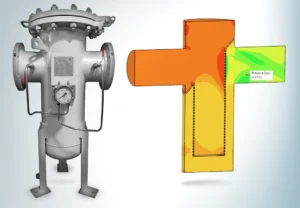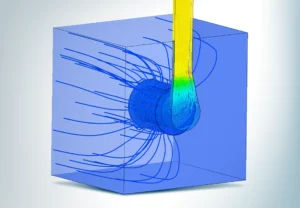Nalco Water is a wholly owned subsidiary of Ecolab and a US supplier of water, energy, and air improvement solutions. Nalco serves 70,000 customers, employing over 11,500 staff across 130 countries. Ecolab has over 48,000 employees with an annual revenue of $15.3bn (2023).
The 1,200 R&D scientists, engineers, and technical specialists at Nalco / Ecolab manage more than 1 trillion gallons of water daily. They leverage their expertise and solutions to significantly reduce, reuse, and recycle water and protect this valuable resource. The Pulp & Paper division provides a range of innovative water treatment solutions for all grades of pulp and paper production. It has successfully deployed cloud-native simulation to design and optimize its water processing equipment.
Over the past 32 years, Mitch Morgan has focused on process optimization and auditing in all different types of heavy industrial facilities, specializing in energy and water at industrial and utility scales. As a senior corporate technical consultant at Nalco Water, Mitch has worked on some of the largest industrial facilities globally, all requiring a large volume of water to run efficiently.
“We use SimScale not just for problem-solving but also to drive the design workflow to better process performance and efficiency in our industrial facilities. Implementation is the ultimate mark of success for any consultant. Bringing ideas and opinions and using specialist software tools like SimScale to realize and implement those engineering ideas is the real value statement.”

Mitch Morgan
Senior Corporate Technical Consultant at Nalco Water, an Ecolab Company
The Monterrey site in Mexico has serious challenges with its paper pulp process. Many of the assets are over 50 years old, and one key issue has arisen with the injector nozzles used to add chemicals to the water/pulp mixture. Uneven flow caused by eddies in the pipe created ‘pulp balls,’ leading to repeated and costly maintenance downtime ($500/min). It was unclear what the cause of the issue was or how to remediate it, and with cutting into the pipe to make changes to the nozzle being a monumental task, the margin for error was very high.
The simulations aimed to optimize the flow and pressure distribution within the industrial water nozzle. The nozzle is responsible for mixing a polymer with white water (a hot water suspension) before the mixture enters the headbox of a paper machine. The nozzle’s hydrodynamic performance is critical, as it directly influences the uniformity of polymer distribution—a key factor in ensuring the consistent formation of the liner and medium layers in cardboard production.
Engineering simulation is critical for such applications for the following reasons:
Mitch ran a baseline simulation to represent the as-built design and gain an understanding of the turbulent flow behavior inside the pipe. With the simulations taking only 30 minutes, he was able to quickly iterate through different pipe configurations and inlet velocities for the side nozzles and explore different solutions virtually. The images show some illustrative results from their proprietary setup.




The nozzle design underwent significant refinement to eliminate the internal voids responsible for the flow disturbances. The revised design was implemented in June of this year (2024), focusing on smoothing the internal flow path to prevent flow separation and minimize eddy formation. The optimized nozzle configuration resulted in a marked improvement in mixing efficiency — achieved without compromising the quality of the final product. A summary of the main benefits includes:
Having identified an improved nozzle configuration and implemented the changes, there has been a 70% reduction in unplanned downtime, equating to a saving of $10m/year. Furthermore, the improved design has delivered greater machine stability, increased product quality, higher production throughput, and improved mixing efficiency, reducing the amount of polymer material and steam required.
“We simply could not have succeeded in this project without SimScale. This was my first project with computational fluid dynamics and the SimScale platform but more importantly, the SimScale support team made the process seamless!”

Mitch Morgan
Senior Corporate Technical Consultant at Nalco Water






Sign up for SimScale
and start simulating now